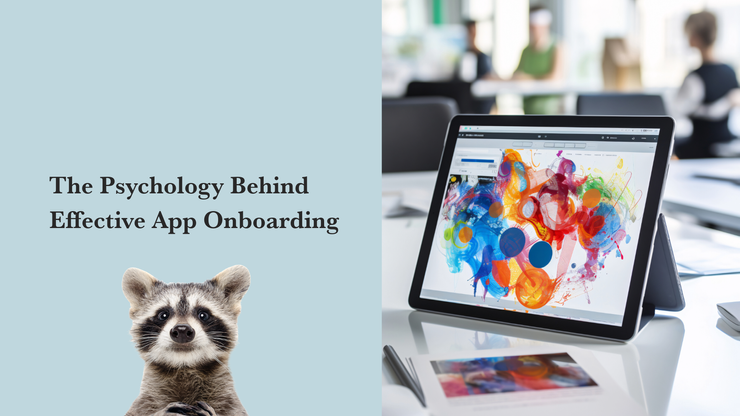
The Psychology Behind Effective App Onboarding
User onboarding is a critical phase in the app user experience journey. It’s the first series of interactions that a user has with an application, and it can significantly impact their long-term engagement and satisfaction.
Effective onboarding not only acquaints users with the app but also sets the tone for their entire experience. Understanding the psychology behind user behavior and cognitive biases can transform this introductory process into a powerful user retention tool.Psychological Principles
Several psychological principles play essential roles in shaping effective onboarding experiences. Here are a few key concepts:
- Cognitive Load Theory: This theory suggests that people have a limited capacity in their working memory to process new information. Effective onboarding should simplify complex information, breaking it down into manageable chunks to avoid overwhelming the user.
- The Zeigarnik Effect: People remember uncompleted or interrupted tasks better than completed tasks. By designing an onboarding process that users can start quickly but complete in stages, apps can make use of this effect to enhance user engagement and recall.
- Commitment and Consistency: This principle from Robert Cialdini's theory of persuasion indicates that if users commit to something small (like starting a simple onboarding process), they’re more likely to stick with it due to the desire to be consistent in their behavior.
- Endowed Progress Effect: This effect occurs when people believe they have made some progress towards a goal. In app onboarding, showing users a quick progression (for example, through a progress bar during setup) can motivate them to complete the process.
Design Tips
To apply these psychological principles effectively, consider the following tips when designing your app’s onboarding experience:
- Keep it Simple: Start with essential functionalities. Avoid bombarding users with too much information up front.
- Use Progressive Disclosure: Introduce features gradually as the user navigates through the app rather than all at once.
- Incorporate Interactive Tutorials: Instead of passive information screens, engage users with interactive tutorials that encourage active learning.
- Leverage Gamification: Elements like badges, points, or completion bars can motivate users to continue through the onboarding process.
- Set Clear Expectations: Clearly communicate what users can achieve by the end of the onboarding process and provide immediate value.
Examples
Several apps excel at onboarding by using these principles effectively:
- Duolingo: Duolingo uses gamification and immediate engagement. Users start learning a new language from the first interaction, which efficiently leverages the endowed progress effect.
- Slack: Slack’s onboarding is interactive and progressive. New features are introduced as users get comfortable with the basic functionalities, reducing cognitive load.
- Headspace: This meditation app starts with a series of engaging and calming onboarding steps that reflect its overall user experience, making it an integral part of the app’s value proposition.
Conclusion
Continuously improving your app’s onboarding process is crucial for maintaining user engagement. Collect user feedback regularly and perform A/B testing on different onboarding flows to see what works best.
Remember, effective onboarding isn’t just about teaching someone how to use an app but about making the process enjoyable and engaging.
By understanding and applying the psychological principles that influence user behavior, developers can create onboarding experiences that users want to complete, setting the stage for long-term engagement and satisfaction.
I hope this article has been helpful to you. If you would like to learn more about the latest UX UI App Development trends and skills, please check more details at Rovertech IT outsourcing.




















